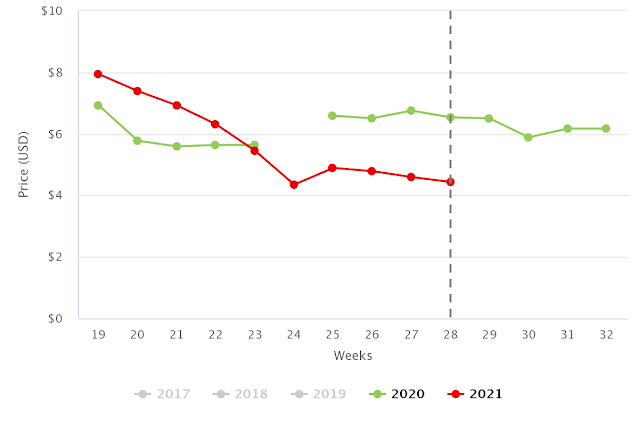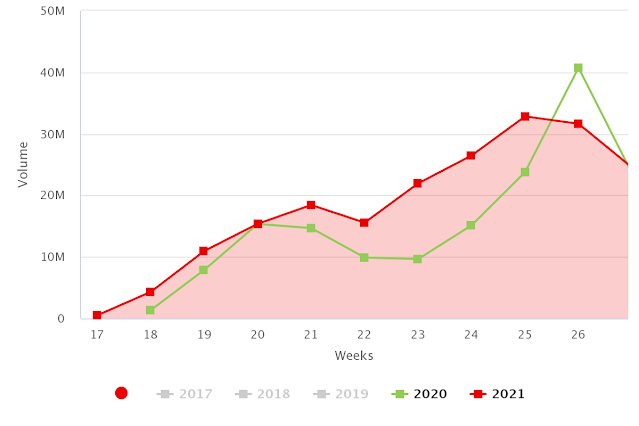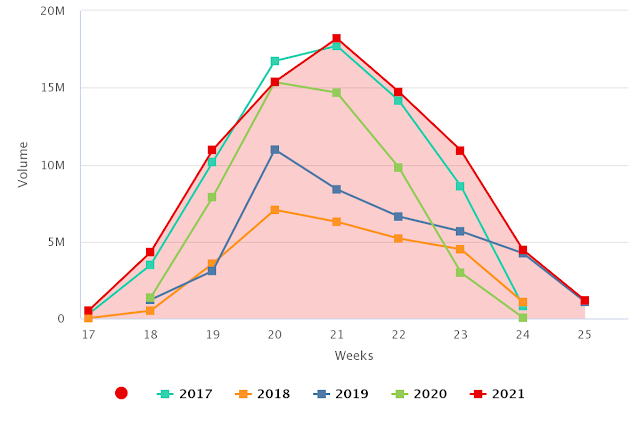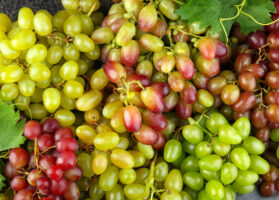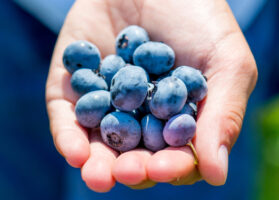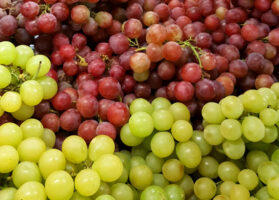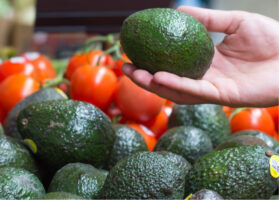Agronometrics in Charts: Cherry prices and volumes in the U.S. market

For the majority of this year, average cherry prices were much lower than those recorded in 2020. While last year’s prices were high compared to a typical year (and those in 2021 were similar to a normal year), it is worth trying to determine the possible reasons that created this price difference.
As you can see in the graph below, average prices in 2021 were higher than those of 2020 between weeks 19 and 22, but from week 23 the roles were reversed and prices in 2021 began to be lower than those of 2020. It can also be seen that the average prices of cherries in week 28 of 2021 were around US$4.43 per kilogram, a 32 percent decrease year-on-year. Cherries that are currently arriving are from Washington.
(Agronometrics users can view this chart with live updates here)
Regarding cherry volumes in the North American market, between weeks 18 and 25, the fruit supplies of this year were higher year-on-year, as you can see in the graph below.
(Agronometrics users can view this chart with live updates here)
Within this increase in cherry volumes in the U.S. market, the most significant increase, and that may have created a decrease in prices, were the volumes from California, this increase is seen between weeks 21 to 25 (the second half of the season). California cherry supplies were also the highest in the last five years, with a historic peak in week 21 of almost 18.2 million kilograms.
(Agronometrics users can view this chart with live updates here)
It is necessary to see since the volume of California has begun to decrease if this will affect prices. It is also necessary to observe what happens with cherry prices in the U.S. market while the Oregon and Washington harvests are in full swing along with the Canadian crop. We must be attentive to the effects of the most recent heat wave that could affect the size and quality of the fruit from these areas. Volumes from Washington and Oregon are already showing much less volume than last year.
Written by: Cristian Crespo F.
Original published in FreshFruitPortal.com on July 20, 2021 (Link)



